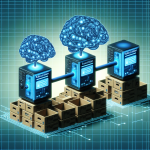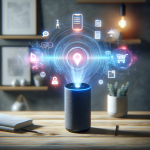Introduction to AI-Powered A/B Testing
A/B testing has long been a cornerstone of data-driven decision-making, enabling product teams, marketers, and growth strategists to identify what strategies work best by comparing two variants. However, traditional A/B testing has its limitations in speed, scalability, and contextual adaptability. Enter artificial intelligence (AI)—a powerful force driving the next evolution of experimentation. AI-powered A/B testing transcends the linear and manual methodologies of the past, offering intelligent automation, faster insights, and ultimately smarter experimentation.
How Traditional A/B Testing Works
Traditional A/B testing involves creating two or more versions of a webpage, email, or user interface element, and splitting an audience between them. Success is determined by statistical significance—typically analysing metrics like click-through rate or conversion rate. While effective, this method has drawbacks:
- Requires large user samples to reach statistical significance
- Can be time-consuming
- Often evaluates only a few variables at a time
- Does not adapt dynamically to user behavior changes
These shortcomings have paved the way for more dynamic and intelligent testing approaches.
What Is AI-Powered A/B Testing?
AI-powered A/B testing enhances traditional experimentation by using machine learning models to automate, accelerate, and optimize tests in real time. Rather than exhaustively testing two static variants, AI-based methods can evaluate and adjust multiple variables simultaneously. These systems continuously learn from user behavior, refining performance dynamically without human intervention.
Some of the key technologies used in AI-powered A/B testing include:
- Multi-armed bandits (MABs)
- Reinforcement learning
- Natural language processing for text-based optimizations
- Computer vision for image and layout evaluations
Benefits of AI-Enhanced Experimentation
AI-infused testing doesn’t just replicate traditional methods—it redefines them. Here are several key benefits:
1. Faster Decision-Making
AI models quickly detect winning variants by observing user behavior in real time, reducing the time it takes to produce meaningful results.
2. Increased Efficiency
Automated experimentation allows teams to test more hypotheses with fewer resources, improving productivity while reducing manual effort.
3. Real-Time Personalization
Unlike static A/B tests, AI can deliver variant experiences personalized to individual users based on behaviors, past interactions, and demographic data.
4. Dynamic Allocation of Traffic
Using algorithms like multi-armed bandits, AI tools shift user traffic toward better-performing variations automatically, improving outcomes even before the test concludes.
Applications Across Industries
AI-powered A/B testing isn’t confined to marketing. It’s gaining traction across various industries:
- E-commerce: Optimize product pages, pricing strategies, and promotional banners with real-time learning.
- Healthcare: Test website designs or messaging that improve patient engagement with online portals.
- Fintech: Personalize onboarding flows or product recommendations based on behavioral segmentation.
- EdTech: Customize lesson plans and learning module layouts based on real-time student interaction data.
Popular AI-Powered A/B Testing Tools
A growing number of platforms offer AI-enhanced experimentation features, including:
- Google Optimize (combined with Google AI): Offers intelligent targeting and auto-allocation features.
- Optimizely: Uses machine learning-based personalization and experimentation engines.
- Adobe Target: Integrates AI for automated decision-making and predictive analytics.
- VWO: Includes AI for smarter segmentation and behavioral analysis.
Challenges and Considerations
Despite its power, AI-powered A/B testing is not without drawbacks:
- Data privacy concerns: Personalization and behavioral data can raise compliance issues.
- Complexity: Requires technical skills and understanding of machine learning principles.
- Dependence on quality data: Poor data quality can significantly impact AI model performance.
Organizations should also avoid the “black box” trap by ensuring they understand how AI decisions are made, and by combining AI insights with human intuition.
The Future of Experimentation
AI is rapidly reshaping how organizations test and learn. Future advancements in generative AI, natural language models, and predictive analytics promise even more personalized and efficient experimentation at scale. As competition intensifies in all digital industries, the ability to learn and iterate faster through AI is becoming a key competitive advantage.
Conclusion
AI-powered A/B testing isn’t merely an upgrade—it’s a paradigm shift. By incorporating machine learning, automation, and real-time adaptability, companies can unlock deeper insights, drive better performance, and do it all at unprecedented speed. For teams focused on continuous improvement and customer-centric growth, adopting smarter experimentation through AI is quickly becoming a necessity rather than a luxury.





